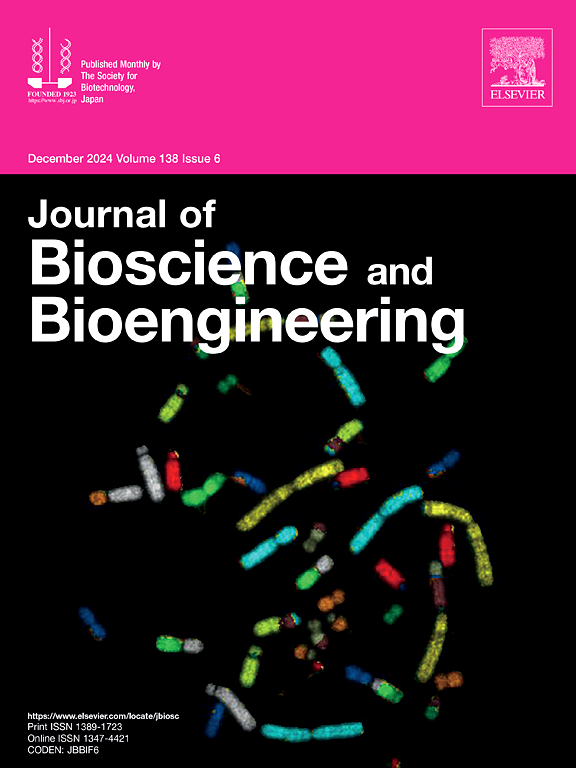深度学习辅助培养基优化提高动物流行链球菌透明质酸产量。
IF 2.9
4区 生物学
Q3 BIOTECHNOLOGY & APPLIED MICROBIOLOGY
引用次数: 0
摘要
为了提高动物流行链球菌生产透明质酸的效率,采用涉及深度学习(DL)算法的流水线对培养基进行优化。为了训练DL模型,采用L18正交阵列设计初始训练数据集(OA01-18),并在深井板中进行小规模培养产生透明质酸(HA)。在此条件下,HA产量范围为0.09 ~ 1.39 g/L。在寻找最佳培养基组成时,系统提出了54种候选优化培养基(OM01-54)。经确认培养试验,以OM30为培养基,HA产量最高,为1.66 g/L。在搅拌槽反应器中确认,OA30中HA的体积产生量大于对照介质。在喂料分批培养中,HA在培养10 h和30 h后分别积累到5.13和9.96 g/初始体积。为了避免HA所产生的高粘度培养基抑制HA的产生,用OM30重复分批培养,大约每6小时更换90%的肉汤体积。结果,在46小时内产生了21.4 g HA,产量达到0.465 g/初始体积/h。本文章由计算机程序翻译,如有差异,请以英文原文为准。
Deep-learning-assisted medium optimization improves hyaluronic acid production by Streptococcus zooepidemicus
To improve the efficiency of hyaluronic acid production by Streptococcus zooepidemicus, the growth medium was optimized with a pipeline involving a deep learning (DL) algorithm. To train the DL model, the initial training dataset (OA01–18) was designed with the L18 orthogonal array, and hyaluronic acid (HA) was produced in small-scale cultures in deepwell plates. The range of HA production was 0.09–1.39 g/L under these conditions. In searching for the optimal medium composition, 54 candidate optimized media (OM01–54) were proposed by the system. According to the confirming culture experiment, the best production of HA (1.66 g/L) was achieved with OM30. During confirmation in a stirred-tank reactor, the volumetric production of HA in OA30 was larger than that in the control medium. In fed batch culture, HA accumulated to 5.13 and 9.96 g/Linitial volume after 10 and 30 h in culture, respectively. To avoid the suppression of HA production by the high viscosity of the medium conferred by HA, repeated batch culture with OM30 was performed by replacing 90 % of the broth volume approximately every 6 h. As a result, 21.4 g of HA was produced in 46 h, and productivity reached 0.465 g/Linitial volume/h.
求助全文
通过发布文献求助,成功后即可免费获取论文全文。
去求助
来源期刊

Journal of bioscience and bioengineering
生物-生物工程与应用微生物
CiteScore
5.90
自引率
3.60%
发文量
144
审稿时长
51 days
期刊介绍:
The Journal of Bioscience and Bioengineering is a research journal publishing original full-length research papers, reviews, and Letters to the Editor. The Journal is devoted to the advancement and dissemination of knowledge concerning fermentation technology, biochemical engineering, food technology and microbiology.
 求助内容:
求助内容: 应助结果提醒方式:
应助结果提醒方式:


